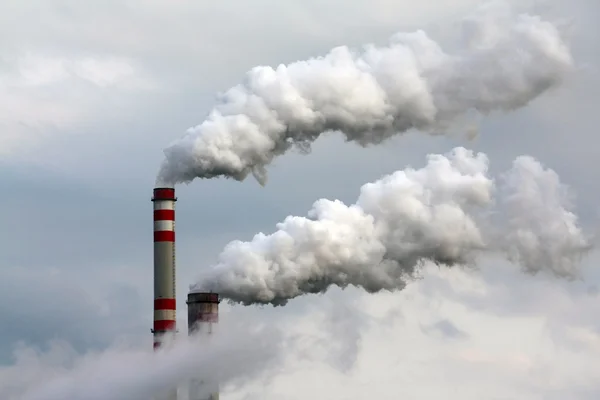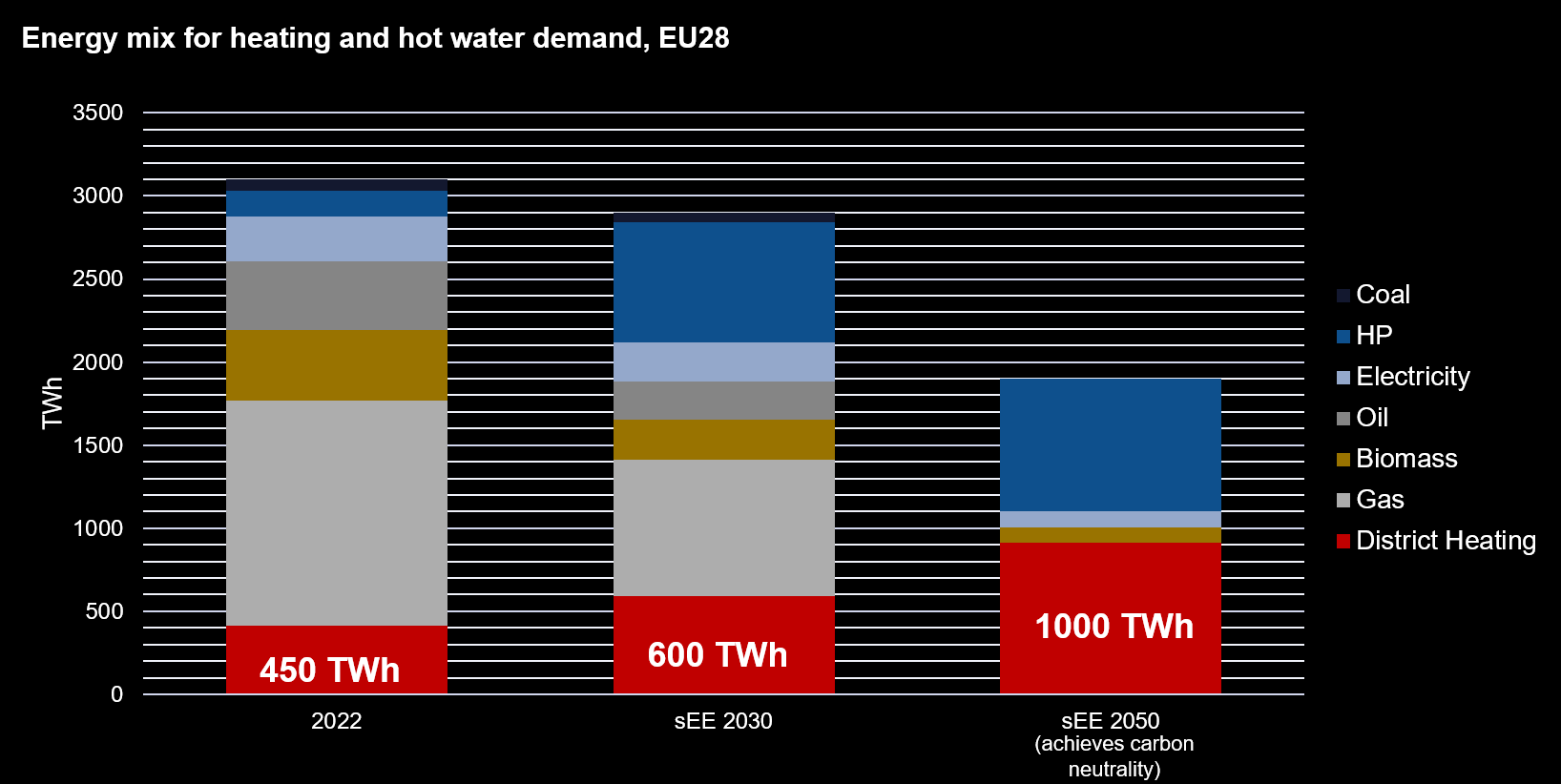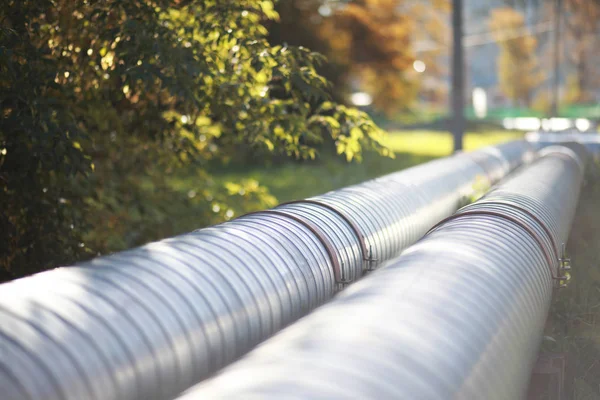The development of district heating networks represents a major opportunity to decarbonise heat production: Wherever urban density justifies it, the most efficient way of decarbonising low-temperature heat is through district heating networks.
Current district heating capacity in Europe is around 450 TWh out of the 3,100 TWh of the low-temperature heating market, and 60% of this production is still fossil-based.
If we are to succeed in decarbonising heat production by 2050, the share of district heating will have to increase significantly. The Heat Roadmap Europe forecasts a significant increase in this contribution, from 13% to over 45% by 2050.






